Europe Energy Management Systems Market Size
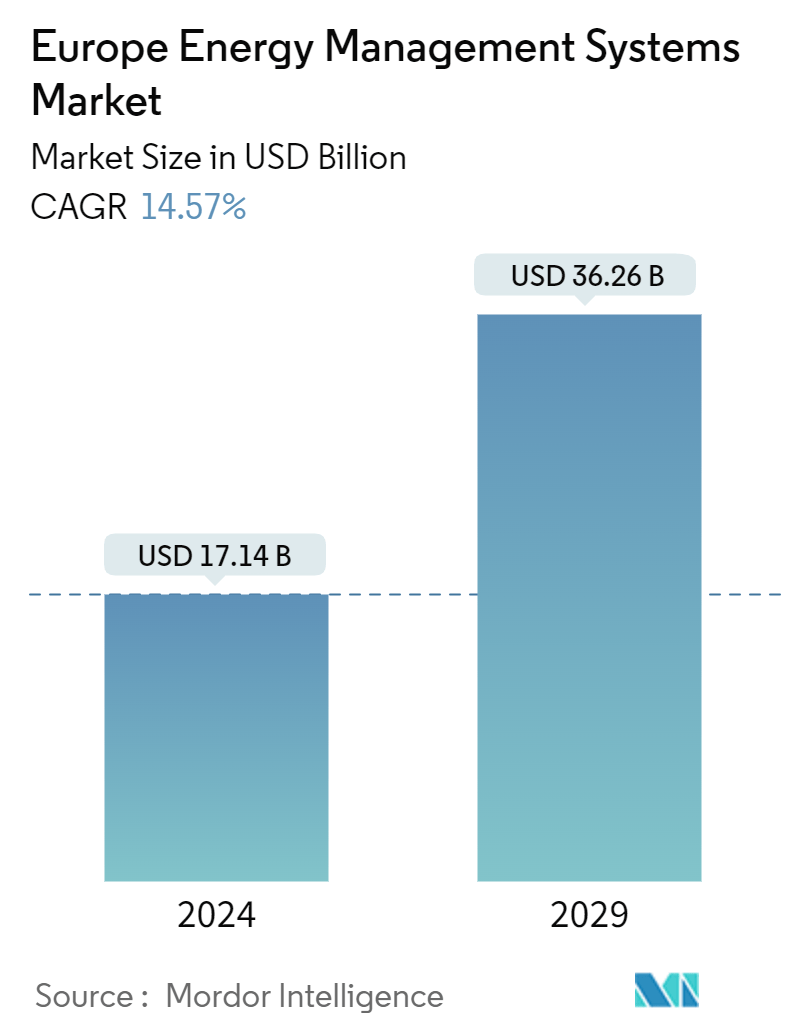
| Study Period | 2019 - 2029 |
| Base Year For Estimation | 2023 |
| Market Size (2024) | USD 17.14 Billion |
| Market Size (2029) | USD 36.26 Billion |
| CAGR (2024 - 2029) | 14.57 % |
| Market Concentration | High |
Major Players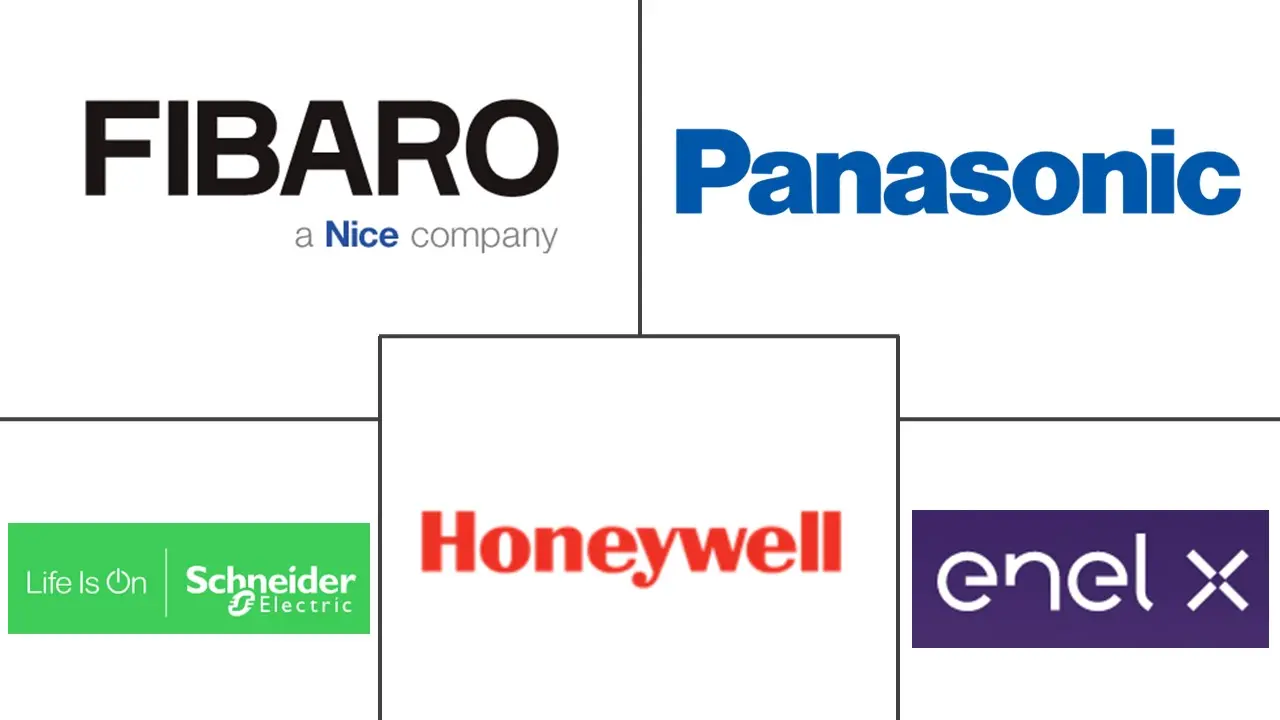
*Disclaimer: Major Players sorted in no particular order |
Europe Energy Management Systems Market Analysis
The Europe Energy Management Systems Market size is estimated at USD 17.14 billion in 2024, and is expected to reach USD 36.26 billion by 2029, growing at a CAGR of 14.57% during the forecast period (2024-2029).
- Smart Grid Revolution Drives Market Growth: The Europe Energy Management Systems (EMS) market is undergoing significant expansion, driven by the adoption of smart grid technologies and smart meters. These innovations are transforming the energy sector, with substantial investments being made to modernize grids across Europe.
- Smart grid investment: Investment in Europe’s smart grid infrastructure reached USD 56.7 billion in 2021, showing notable growth from USD 48.7 billion in 2017.
- Smart meter adoption: The European Union aims to install 225 million smart electricity meters and 51 million gas meters by 2024, with 80% of consumers targeted to be equipped with smart meters.
- UK smart meter installations: In Great Britain, the number of smart meters installed by large energy suppliers surged from 135,090 in Q2 2020 to 979,752 in Q2 2021, reflecting rapid adoption rates.
- Energy Efficiency Takes Center Stage: Rising investments in energy efficiency are fueling the demand for EMS solutions as governments and businesses recognize the benefits of optimized energy use.
- EU energy efficiency target: The European Union has set a goal of increasing energy efficiency by at least 32.5% by 2030, driving demand for energy-efficient solutions.
- Germany’s efficiency drive: Germany aims to cut primary energy consumption by 30% by 2030 compared to 2008, pushing demand for advanced EMS technology.
- Turkey’s efficiency investments: Turkey plans to invest over USD 10 billion in energy efficiency over the next decade, with projected savings of USD 30 billion by 2033.
- HVAC Demand Surges Amid Population Growth: Demand for Heating, Ventilation, and Air Conditioning (HVAC) systems is growing rapidly, driven by population increases and changing climate conditions, creating a new market for EMS providers.
- Population growth: Europe’s population grew to 743.5 million in 2022, up by 4.6 million since 2012, increasing demand for new housing and HVAC systems.
- HVAC demand: The demand for air conditioning devices in Europe hit 8.9 million units in 2021, with Russia leading in sales at 1.9 million units.
- New HVAC plant investment: Mitsubishi Electric Corporation invested USD 113 million in a new air-conditioner production plant in Turkey, boosting production capacity by 100,000 units annually.
- Competitive Landscape Shapes Market Dynamics: The European EMS market is highly competitive, with both established players and startups working to gain market share.
- Key market players: Leading companies include Schneider Electric SE, Honeywell International Inc., Panasonic Corporation, and Enel X S.r.l.
- Schneider Electric's dominance: With 135,000 employees, Schneider Electric leads in providing comprehensive energy management software.
- Emerging players: Startups such as Green Energy Options Limited and Efergy Technologies S.L. are gaining traction in the residential EMS market with in-home energy monitoring devices.
- Future Outlook: Integration and Innovation: The future of Europe’s EMS market looks bright, with technological advancements and integration with other smart systems expected to drive further growth.
- Energy storage growth: The European Union’s energy storage capacity is expected to reach 187 GW by 2030 and 600 GW by 2050, necessitating advanced EMS solutions.
- AI and machine learning adoption: AI and machine learning are poised to enhance EMS capabilities, as countries like France invest EUR 2.2 billion in AI strategies.
- Distributed energy systems: The shift towards decentralized energy and increasing adoption of renewable energy will require sophisticated EMS to manage more complex energy ecosystems.
Europe Energy Management Systems Market Trends
Building Energy Management Systems (BEMS) Segment Drives Market Growth
Urbanization and energy efficiency regulations have positioned Building Energy Management Systems (BEMS) as the largest segment in the Europe EMS market.
- Market value: BEMS was valued at USD 9.38 billion in 2022 and is projected to reach USD 17.67 billion by 2028, growing at a CAGR of 11.2%.
- Urbanization impact: The rise in urbanization and stringent energy efficiency laws across Europe drive the demand for BEMS solutions.
- Smart Building Technologies Fuel Growth: The increasing adoption of smart building technologies, which leverage advanced software and hardware, is a significant growth driver for the BEMS segment.
- AI integration: Government investments in artificial intelligence, such as France’s EUR 2.2 billion (USD 2.46 billion) AI strategy, are expected to further fuel BEMS market growth.
- Technological innovation: Smart building technologies are enabling enhanced energy management, contributing to the adoption of EMS across commercial sectors.
- Government Initiatives Propel Market Expansion: Regulatory mandates like the Energy Efficiency Directive (EED) compel European nations to adopt EMS solutions, boosting market growth.
- Energy audits: The EED mandates energy audits and EMS adoption, pushing companies to develop innovative products for commercial customers.
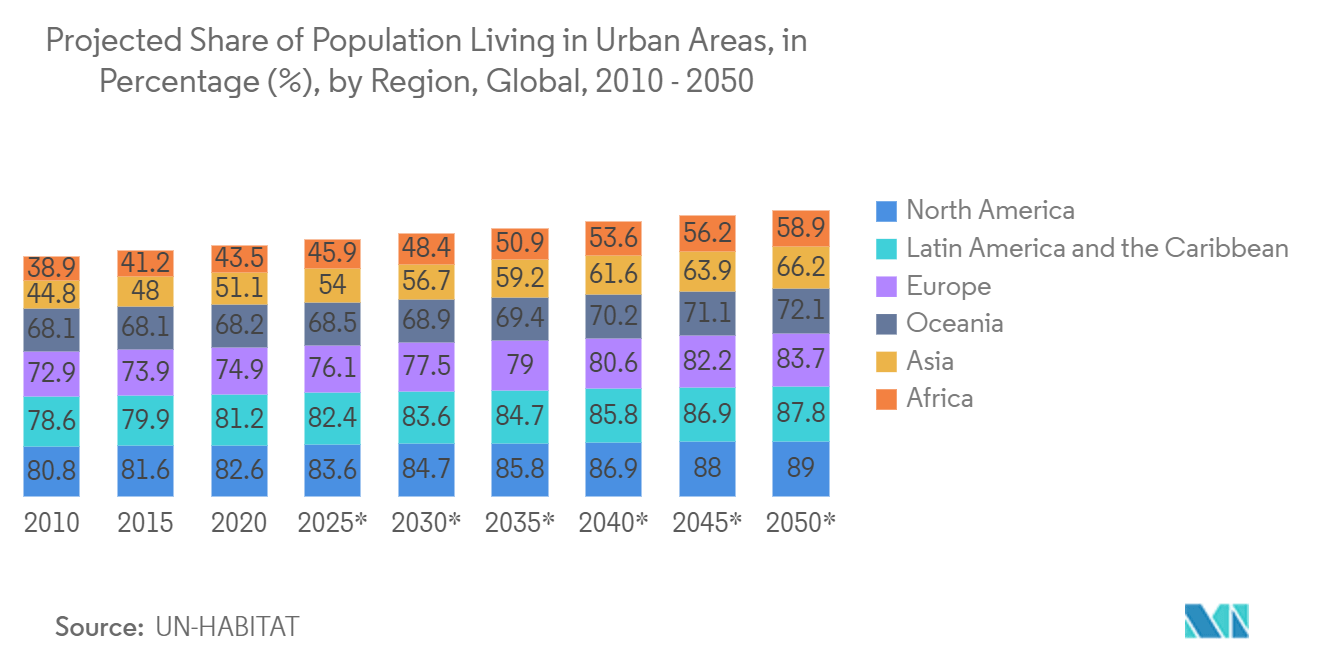
Commercial Sector Segment is Expected to Hold Significant Market Share
The commercial sector remains a major adopter of BEMS, with rising construction activity driving growth.
- Commercial market size: Valued at USD 2.02 billion in 2022, the commercial BEMS market is expected to grow at a CAGR of 12.3% and reach USD 4.04 billion by 2028.
- Construction boost: The UK saw a 27.7% increase in private commercial construction orders in Q3 2022, further driving BEMS adoption.
- Home Energy Management Systems (HEMS): Fastest-Growing Segment
- The HEMS segment is the fastest-growing in the European EMS market, spurred by the smart home trend.
- Rapid growth: HEMS is projected to grow from USD 4.61 billion in 2022 to USD 13.98 billion by 2028, registering a CAGR of 20.1%.
- Smart home integration: The rise in networked smart home technologies has made HEMS increasingly attractive to consumers.
- Technological Advancements Drive Adoption: HEMS adoption is supported by technological advances in communication mediums and smart devices.
- Home area networks (HANs): Bi-directional communication technologies are advancing home energy management, contributing to the rising demand for HEMS.
- Software solutions lead: Software solutions dominate the HEMS market, with a projected CAGR of 22.0% from 2023 to 2028, compared to hardware’s 18.9%.
- Strategic Partnerships Accelerate Market Expansion: Key industry partnerships are expanding HEMS offerings, enabling broader market penetration.
- Eaton and LG partnership: Eaton’s collaboration with LG Electronics in February 2022 exemplifies how strategic partnerships enhance HEMS solutions and drive market growth.
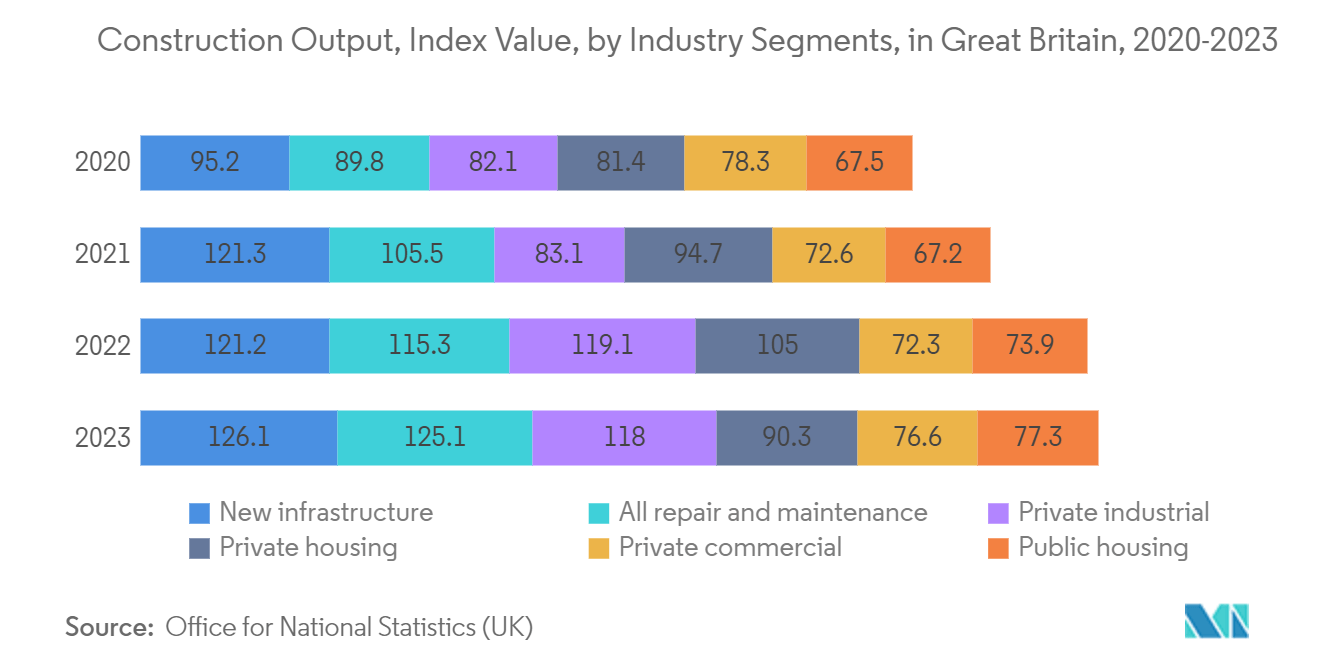
Europe Energy Management Systems Industry Overview
The European EMS market is dominated by global players with strong market positions and technological expertise.
Market leaders: Schneider Electric, Honeywell International, and Panasonic Corporation are key players with comprehensive product portfolios.
Consolidated market: The EMS market is consolidated, with top players leveraging their R&D investments and global reach to maintain leadership.
Innovation and Technological Prowess Drive Leadership: Innovation is central to maintaining leadership in the EMS market, with top companies investing heavily in technology.
R&D investment: Companies like Schneider Electric invest significantly in R&D to develop advanced energy management solutions, securing their market positions.
Partnerships drive innovation: Collaborations, such as Schneider Electric’s partnership with Hitachi Energy, are helping companies innovate and expand in renewable energy management.
Strategies for Future Success in the EMS Market: Key strategies for success in the EMS market include smart grid investments, IoT-based automation, and compliance with energy regulations.
Smart grid focus: Companies are increasingly focusing on smart grid technologies and building automation as part of their EMS strategies.
Regulatory adaptation: Adapting to new energy regulations will be critical for maintaining a competitive edge in the evolving EMS landscape.
Europe Energy Management Systems Market Leaders
-
Schneider Electric SE
-
Fibar Group SA (Nice SPA)
-
Honeywell International Inc.
-
Panasonic Corporation
-
Enel X (Enel SpA)
*Disclaimer: Major Players sorted in no particular order
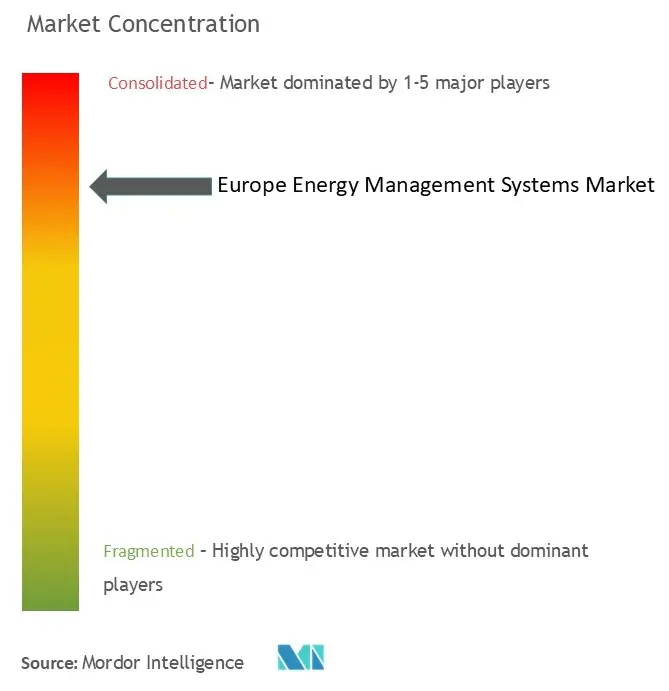
Europe Energy Management Systems Market News
- February 2023 - SolarEdge acquired Hark Systems, expanding its IoT and energy analytics capabilities for corporate and industrial clients.
- April 2023 - Globalworth partnered with Honeywell to deploy connected technologies in its commercial buildings in Romania and Poland, improving operational efficiency and reducing energy consumption.
Europe Energy Management Systems Market Report - Table of Contents
1. INTRODUCTION
- 1.1 Study Assumptions and Market Definition
- 1.2 Scope of the Study
2. RESEARCH METHODOLOGY
3. EXECUTIVE SUMMARY
4. MARKET INSIGHTS
- 4.1 Market Overview
- 4.2 Technological Advancements
- 4.3 Impact of Macro-economic Factors on The Market
-
4.4 Industry Attractiveness - Porter's Five Forces Analysis
- 4.4.1 Bargaining Power of Suppliers
- 4.4.2 Bargaining Power of Buyers
- 4.4.3 Threat of New Entrants
- 4.4.4 Threat of Substitutes
- 4.4.5 Degree of Competition
- 4.5 Industry Supply Chain Analysis
5. MARKET DYNAMICS
-
5.1 Market Drivers
- 5.1.1 Increasing Usage of Smart Grids and Smart Meters
- 5.1.2 Rising Investments in Energy Efficiency
- 5.1.3 Surge in Demand for HVAC Housing Owing to Rapid Population Growth
-
5.2 Market Restraints
- 5.2.1 High Initial Installation Costs Coupled With Maintenance Costs
- 5.2.2 Lack of Awareness in Small and Medium-sized Businesses
6. MARKET SEGMENTATION
-
6.1 By Type of Solution
- 6.1.1 Building Energy Management System
- 6.1.1.1 Hardware
- 6.1.1.2 Software and Services
- 6.1.2 By End-User
- 6.1.2.1 Commercial
- 6.1.2.2 Healthcare
- 6.1.2.3 Education
- 6.1.2.4 Industrial
- 6.1.2.5 Other End-Users
- 6.1.3 Home Energy Management System
- 6.1.3.1 Hardware
- 6.1.3.2 Software
-
6.2 By Distribution Channel
- 6.2.1 Direct/Partner Sales/Retail
- 6.2.2 Value-added Resellers/System Integrators
- 6.2.3 Consultants/Utilities
-
6.3 By Country
- 6.3.1 United Kingdom
- 6.3.2 Germany
- 6.3.3 France
- 6.3.4 Spain
- 6.3.5 Benelux
- 6.3.6 Rest of Europe
7. COMPETITIVE LANDSCAPE
-
7.1 Company Profiles*
- 7.1.1 Schneider Electric SE
- 7.1.2 Fibar Group SA (Nice SpA)
- 7.1.3 Honeywell International Inc.
- 7.1.4 Panasonic Corporation
- 7.1.5 Enel X S.R.L. (Enel SpA)
- 7.1.6 Uplight Inc.
- 7.1.7 SAP SE
- 7.1.8 British Gas Services Limited (Centrica PLC)
- 7.1.9 Green Energy Options Limited
- 7.1.10 Efergy Technologies SL
8. FUTURE OUTLOOK OF THE MARKET
** Subject To AvailablityEurope Energy Management Systems Industry Segmentation
The Energy Management System (EMS) is a tool for monitoring, analyzing, and optimizing the operation of the electric transmission system. The system is widely used in various industries, and EMS implementation includes SCADA, Automatic Generation Control (AGC), and alarms, among others.
The Europe energy management systems market is segmented by type of solution (building energy management systems [hardware, software, and services], by end-user [commercial, healthcare, education, industrial, and other end-users], home energy management systems [hardware, software]), by distribution channel (direct/partner sales/retail, value-added resellers/system integrators, consultants/utilities), by country (United Kingdom, Germany, France, Spain, Benelux, and the rest of Europe). The report offers market forecasts and size in value (USD) for all the above segments.
| By Type of Solution | Building Energy Management System | Hardware |
| Software and Services | ||
| By Type of Solution | By End-User | Commercial |
| Healthcare | ||
| Education | ||
| Industrial | ||
| Other End-Users | ||
| By Type of Solution | Home Energy Management System | Hardware |
| Software | ||
| By Distribution Channel | Direct/Partner Sales/Retail | |
| Value-added Resellers/System Integrators | ||
| Consultants/Utilities | ||
| By Country | United Kingdom | |
| Germany | ||
| France | ||
| Spain | ||
| Benelux | ||
| Rest of Europe |
Europe Energy Management Systems Market Research FAQs
How big is the Europe Energy Management Systems Market?
The Europe Energy Management Systems Market size is expected to reach USD 17.14 billion in 2024 and grow at a CAGR of 14.57% to reach USD 36.26 billion by 2029.
What is the current Europe Energy Management Systems Market size?
In 2024, the Europe Energy Management Systems Market size is expected to reach USD 17.14 billion.
Who are the key players in Europe Energy Management Systems Market?
Schneider Electric SE, Fibar Group SA (Nice SPA), Honeywell International Inc., Panasonic Corporation and Enel X (Enel SpA) are the major companies operating in the Europe Energy Management Systems Market.
What years does this Europe Energy Management Systems Market cover, and what was the market size in 2023?
In 2023, the Europe Energy Management Systems Market size was estimated at USD 14.64 billion. The report covers the Europe Energy Management Systems Market historical market size for years: 2019, 2020, 2021, 2022 and 2023. The report also forecasts the Europe Energy Management Systems Market size for years: 2024, 2025, 2026, 2027, 2028 and 2029.
Europe Energy Management Systems Industry Report
Europe Energy Management Systems (EMS) Market Research
The Europe Energy Management Systems (EMS) market research report provides in-depth analysis and insights into key industry trends, growth drivers, and competitive dynamics. The report covers strategic areas such as the integration of smart grid technologies, energy efficiency solutions, and the adoption of IoT-based automation across sectors. In particular, it highlights the increasing demand for Building Energy Management Systems (BEMS) and Home Energy Management Systems (HEMS) as critical components of energy optimization. Stakeholders can benefit from detailed industry analysis, including market segmentation and forecasts, all available in a comprehensive report pdf.
This report offers stakeholders the tools to understand and capitalize on emerging opportunities in the European EMS market. With a focus on renewable energy management systems and sustainable solutions, the research helps companies align with regulatory mandates and innovation trends. Whether it's the rise of smart grid investments or advancements in energy storage, the report delivers actionable insights on market growth, industry leaders, and future outlooks. All the findings are presented in an easy-to-read report pdf, ensuring that decision-makers can access valuable market data and predictions efficiently.



